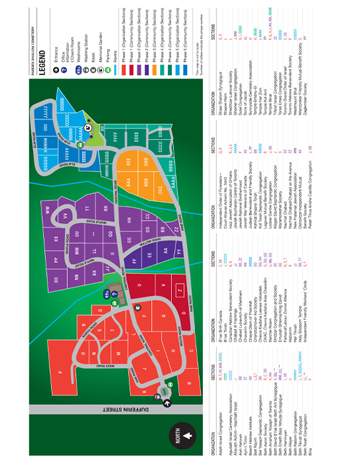Cemetery Description
The Pardes Shalom Cemetery is located on Dufferin Sreet,
(East side) one mile and a half North of Major Mackenzie Blvd.
Facilities:
- Chapel
- Public Washrooms
- Meeting hall
- Hand Washing at exit
Jewish Customs at Cemeteries
Basic respect should be shown. Refrain from eating, shouting, singing.
Try to avoid walking on the graves if possible.
Learn More
A visit may evoke words of Psalms or the El Maleh Rahamim memorial prayer.
Sephardic liturgy’s Hashkaba prayer is said in hope of a peaceful
rest for the departed. Syrian Jews read the lines of long acrostic Psalm
119 that spell out the Hebrew name of the deceased. This psalm expresses
loyalty to the word of God and hope for salvation. The words that come to
mind are also prayers if only written in the prayer book of the heart.
With minor exception you can visit a cemetery or grave on virtually all weekdays.
Visitation are customarily not made on chol ha’moed–the middle days
of Passover and Succot–nor on Purim, as these are holy days of joy. While
visitation of the grave is permitted at almost any time, excessive visits are
discouraged. “The rabbis were apprehensive that frequent visiting to the cemetery
might become a pattern of living thus preventing the bereaved from placing
their dead in proper perspective” (The Jewish Way in Death and Mourning,
Maurice Lamm, p. 192).
Because contact with a dead body is considered a defilement, Kohens are
not allowed into a cemetery except in the case of a very close relative,
because they would then be unclean and unable to perform their priestly
function. For the rest of us, the mitzvah (blessing) of performing these
services for a departed person outweigh the defilement of being made unclean.
Transitions in Jewish life are often accompanied by water. A body is
bathed in a poignant, dignified ceremony before burial. Jews-by-choice mark
their entry into the Jewish people by immersing themselves in mikveh waters.
Similarly, hands are washed after a cemetery visit to mark the departure
from the surroundings of death to an attachment with life. Many of the
cemeteries in the Toronto area have hand washing stations, many of which
have been built by Steeles Memorial Chapel
When visiting Jewish graves the custom is to place a small stone on the
grave using the left hand. This shows that someone visited the gravesite,
and is also a way of participating in the mitzvah of burial.
Leaving flowers is not a traditional Jewish practice.













